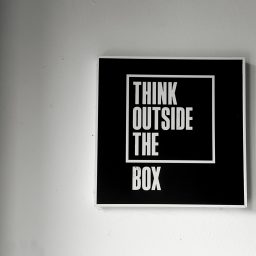“Never change a winning team” is a popular and usually true slogan in organizations. If you’ve been successful up to now with the same old methods and personnel, why should you change anything? But this isn’t true for all assignments. Especially in strategy work and the use of strategy tools, it is possible to become too entangled in routine.
If strategy work in an organization is simply worked through “as we’ve always done”, it will directly lead you into the routine trap. If you just pick up your tool and fill out the matrix as you did last year and the year before, you’ll avoid tackling what has changed and what needs to change. So, it’s worthwhile taking a closer look at strategy tools and their respective observation extracts.
The tools and methods you may well have been working with for years may still feel as powerful as at the beginning, but the market, its players and the challenges have changed. And if the same old tool is always used, you’ll be blind to the options for action that would only come into view through a change of tool – on the one hand, because external influences change, and on the other hand, because a new tool enables you to take a new look and thus gain new options for action.
Taking a few stumbling blocks into account in strategy work can act as a refreshing new start, align the team, and make topics addressable that would otherwise tend to get lost in the everyday business.
Caught in an organization’s micropolitical thicket
Strategy tools are used to achieve objectivity. Yet, they actually result in just the opposite, since they always reflect the micro-political situation of an organization or team. No tool is neutral – neither SWOT nor competitive analysis. A tool focuses on extracts, predefined topics and parameters. Which ones are brought into focus and which are left out are decisions that have to be negotiated in an organization’s micropolitical context. Actors who can position themselves well in micropolitical terms will push the tool that supports their interests and perspectives.
What is considered a weakness and what a strength depends on the respective positions of the organization’s participants.
Just how tricky this can make strategy work is often underestimated. For example, a pharmaceutical company schedules a Strengths, Weaknesses, Opportunities, Threats (SWOT) workshop. The aim is to identify the strengths and weaknesses of the company’s own products and those of its competitors, as well as any opportunities and threats, such as new therapy guidelines or treatment preferences. The SWOT analysis initially makes it easier for participants to address critical points, because its aim is to gather a wide variety of perspectives and aspects.
However, it is important to be very clear that what is evaluated as a weakness or strength and how much weight this evaluation has depends on the participants’ respective positions. In other words, it is a question of power, influence, and affiliation. A biomarker, for example, is an important USP from a medical functions’ perspective. Marketing, in contrast, would probably prefer an all-comer strategy for market development.
Joint planning protects against surprises
With the potentials and limitations in mind, it may be worthwhile discussing with colleagues about which tools they would like to work with in advance of the actual strategy workshop. Colleagues who think from the viewpoint of research & development logic will want to consider more about possibilities than Sales colleagues who focus on the weaknesses of existing products because they have to discuss them with practitioners.
An understanding should also be reached about the exact subject-matter of the analysis. Although this can happen at the start of a workshop, that would entail the risk of surprises and an alignment of the program that not all participants will want to follow. Alternatively, you can reach an agreement in advance within the team. This may involve more work than a brief discussion before the work begins, but it will mean that everyone is more likely to work together because they have decided on things together.
The questions that should be clarified in advance could be “Exactly what key question are we pursuing?” and “Which customer segments are we looking at in more detail?” A possible third option is that managerial staff themselves decide on the range of topics beforehand – a chance for them to put their own agenda on the table and win over allies in advance. Even more granular are the micropolitical considerations in working the tools, e.g., deciding which points in the SWOT analysis are to be pursued in depth, and which ones are only to be briefly touched upon.
There will always be blind spots
Whether it’s a case of SWOT, strategic gaming or situation analysis, the use of strategy tools always reflects the micropolitical perspectives behind them. The parameters to be negotiated are only a slice of reality, emphasize a specific perspective, and therefore have be understood as a setting of the agenda. The fact that there are blind spots should always be kept in mind, as no tool can look at reality in its entirety.
If there are disputes in a team or organization about the choice of strategy tools, the motive is often that “this or that line of vision fits my goals better”. Each faction involved wants to confirm or justify its actions, because weaknesses are often interpreted as mistakes. That is why there is always a struggle in advance to set the agenda, so that one’s own customer or one’s own matter does not look bad. In the worst case, an actor may even withdraw from participating in the tool altogether.
Implementing results – even when it hurts
The final danger inherent in strategy workshops is their level of abstraction. It’s too easy to accept the results, flag them as goals to be implemented, but skirt around the concrete questions: What exactly are we taking away? What exactly are we implementing, and how? Who is responsible for what? Which levers should be used first? These questions lead more precisely to implementation and thus ensure that things will remain at an all-too-comfortable false consensus. If everything is the same after a workshop, something has gone wrong. There must be consequences. They may be painful, but can also liberating.
In most tools, the step of moving into action is no longer spelled out; they are designed to produce results in the form of text, not action. It is important to reach an understanding of what the strongest and most promising levers are. After all, it is only in individually structured operations after prioritization and alignment with an organization’s actual situation that a strategy tool becomes a useful tool for the situation in question. And then it is anything but a simple routine tool.






